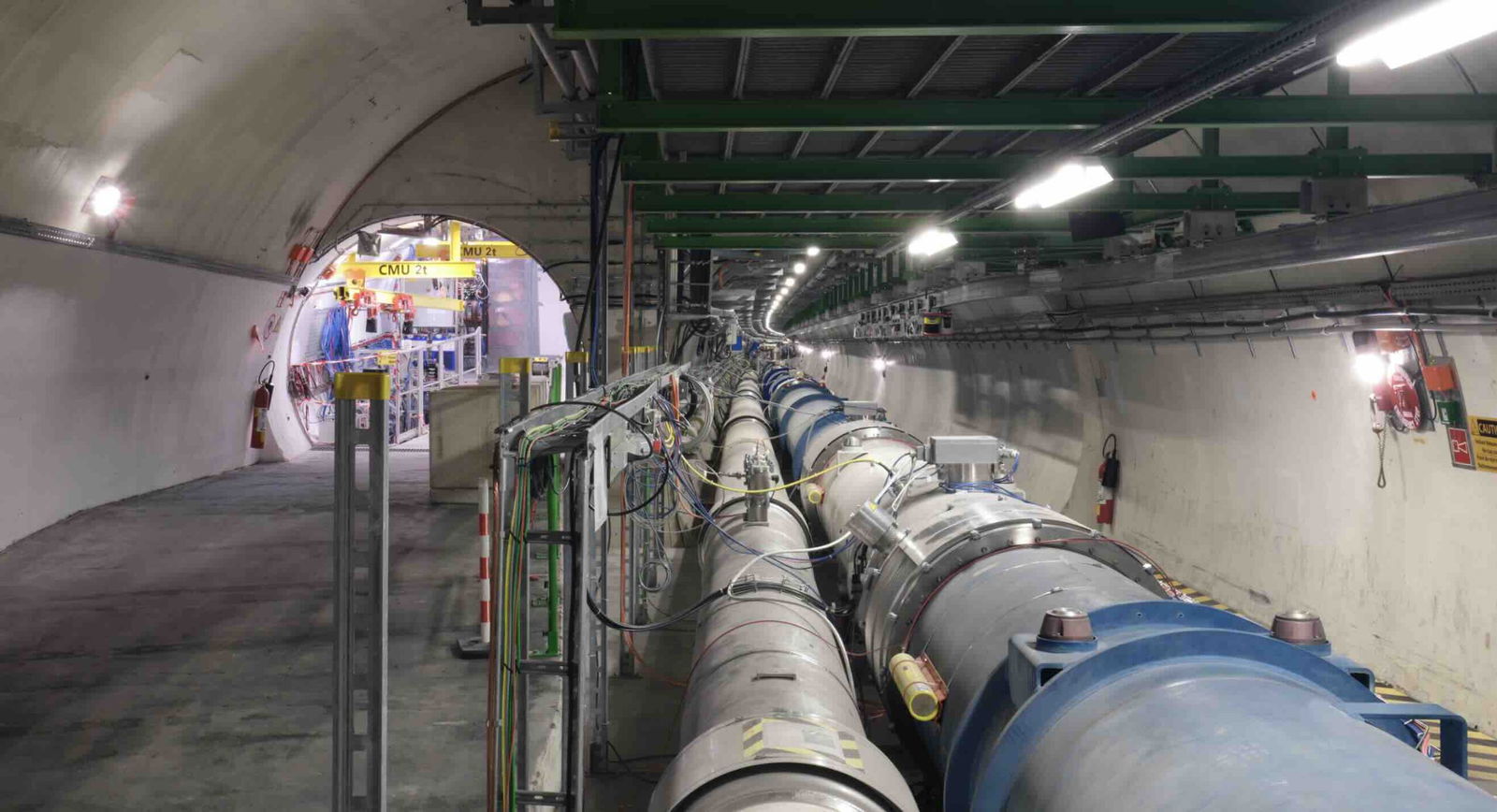High-energy neutrino interactions have been observed within a particle collider for the first time, according to findings detailed in a study that marks an important new milestone in particle physics.
Neutrinos are neutral sub-atomic particles that play a significant role in the Standard Model of particle physics. Despite their abundance in the universe, they are sometimes called “ghost particles” given that they seldom interact with matter, making them difficult to detect.
For particle physicists, understanding these rare neutrino interactions with other forms of matter is a significant pursuit toward gaining a better understanding of our universe. Such studies may help answer questions like why particles have mass and why there is more matter than antimatter.
Now, new research led by professors Akitaka Ariga and Tomoko Ariga that employed the Forward Search Experiment (FASER) at CERN’s Large Hadron Collider (LHC) resulted in the successful detection of electron and muon neutrinos at energy ranges that have never previously been explored.
Unveiling High-Energy Neutrino Interactions
The FASER detector at CERN was developed to help physicists search for light and particles that interact at very weak levels, which are predicted in several extended models that go beyond the Standard Model to attempt to understand dark matter and imbalances between matter and antimatter.
However, another of FASER’s areas of focus involves studies of the origin of neutrino masses. Comprising 730 layers of tungsten plates and emulsion films, the FASERν detector is dedicated to observing high-energy neutrinos produced from proton-proton collisions within the LHC.
For their recent study, the Ariga research team used the detector to observe neutrinos that were produced during such collisions, allowing them to detect the elusive particles during interactions in the teraelectronvolts (TeV) range.
Such high-range neutrinos detections have never been recorded previously from an artificial source and offer unprecedented observations that are consistent with the Standard Model.
Additionally, the FASERν detector provided precise data about these proton collisions that allowed the researcher to reconstruct charged particle tracks down to the sub-micron. “This allows us to identify electron and muon charged-current (CC) neutrino interactions and the measurement of neutrino interaction cross-sections in the currently unexplored TeV energy range,” Dr. Akitaka Ariga said in a statement.
Implications for Particle Physics
During the experiments, four electron neutrino interactions were observed, along with twice as many muon neutrino interactions. Every interaction occurred with a high degree of statistical significance, which helped the team rule out the possibility that some of the observations may have resulted from background fluctuations as opposed to real neutrino events.
The team’s success points toward more comprehensive studies of neutrino interactions at TeV energies. Significantly, the new research also offers particle physicists a promising way of studying the fundamental particles that form the basis of our universe.
Fundamentally, the new findings mark the notable first physics results involving neutrinos derived from a particle collider, a development that could pave the way toward game-changing future experiments and research for particle physicists.
Dr. Ken Ohashi, a researcher at the University of Bern Laboratory for High Energy Physics, Dr. Hiroaki Kawahara at Kyushu University, and Assistant Professor Daiki Hayakawa at the Graduate School of Science at Chiba University also participated in the research, along with members of the FASER collaboration.
The international team’s findings were detailed in a new paper, “First Measurement of 𝜈𝑒 and 𝜈𝜇 Interaction Cross Sections at the LHC with FASER’s Emulsion Detector,” published in Physical Review Letters.
Micah Hanks is the Editor-in-Chief and Co-Founder of The Debrief. He can be reached by email at micah@thedebrief.org. Follow his work at micahhanks.com and on X: @MicahHanks.

